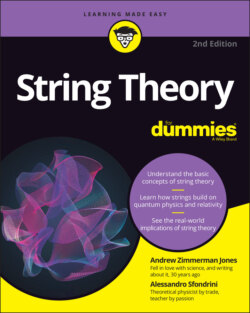Читать книгу String Theory For Dummies - Andrew Zimmerman Jones - Страница 98
Force, mass, and acceleration: Putting objects into motion
ОглавлениеNewton formulated three laws of motion, which showed his understanding of the real meaning of motion and how it relates to force. Under his laws of motion, a force creates a proportional acceleration on an object.
This understanding was a necessary foundation upon which his law of gravity was built (see the next section). In fact, both were introduced in his 1686 book, Philosophiae Naturalis Principia Mathematica, a title that translates to Mathematical Principles of Natural Philosophy. This book has become known in physics circles by the shorter title Principia.
The second law of motion says that the force required to accelerate an object is the product of the mass and acceleration, expressed by the equation F = ma, where F is the total force, m is the object’s mass, and a is the acceleration. To figure out the total acceleration on an object, you figure out the total forces acting on it and then divide by the mass.
Strictly speaking, Newton said that force is equal to the change in momentum of an object. In calculus, this is the derivative of momentum with respect to time. Momentum is equal to mass times velocity. Because mass is assumed to be constant and the derivative of velocity with respect to time yields the acceleration, the popular F = ma equation is a simplified way of looking at this situation.
This equation can also be used to define inertial mass. If we take a force and divide it by the acceleration it causes on an object, we can determine the mass of the object. One question string theorists hope to answer is why some objects have mass and others (such as the photon) do not.
